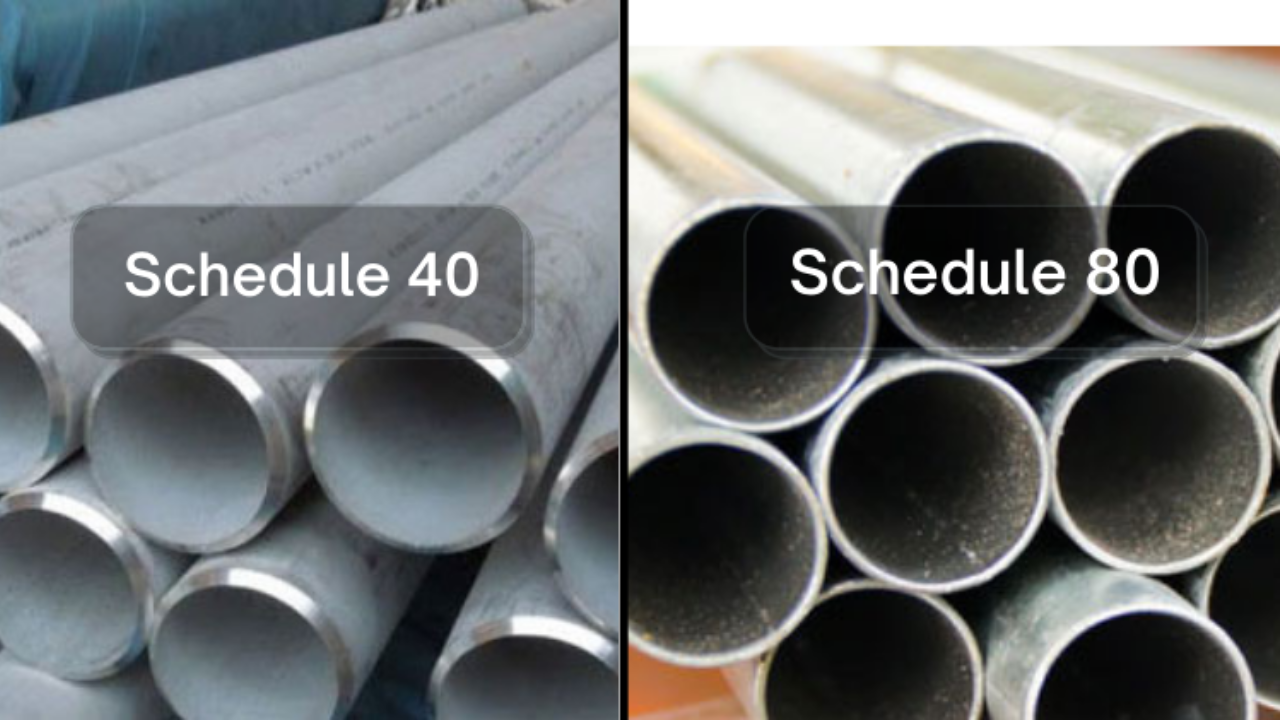When in search of industrial piping, you'll encounter two frequently utilized steel pipe variants: Schedule 40 and Schedule 80. Despite their similar appearance, notable distinctions exist between the two that merit consideration before making a purchase. This article aims to delve into the disparities between Schedule 40 and Schedule 80 steel pipes, their respective applications, and the advantages they offer. But before that let’s briefly learn what is pipe schedule.
What is a Pipe Schedule?
Pipe schedule (SCH) isn't a direct measurement; it's a number derived from a formula for wall thickness. You might have pipes with the same outside diameter but varying schedule numbers, indicating different wall thicknesses for each schedule. To find these dimensions accurately, refer to a Pipe Schedule Chart based on nominal pipe size and schedule number. By combining the pipe schedule with the nominal pipe size, it becomes simple to identify and choose pipes suitable for particular applications. This consideration includes factors such as pressure needs, flow rates, and structural strength.
Major types of Pipe Schedule
The American Society for Testing and Materials (ASTM) has the standard charts according to which pipe scheduling is done. The two major types are:
- Schedule 40 Pipe
- Schedule 80 Pipe
Difference between Schedule 40 Pipe and Schedule 80 Pipe
Schedule pipes 40 and 80 are differentiated in terms of the following parameters
Wall thickness
A significant contrast between Schedule 40 and 80 steel pipes lies in their wall thickness. Compared to Schedule 40 pipes, Schedule 80 pipes feature a thicker wall. Specifically, Schedule 40 pipes typically have a wall thickness of about 0.154 inches, whereas Schedule 80 pipes boast a thickness of 0.337 inches. This increased thickness renders Schedule 80 pipes stronger, enabling them to withstand greater pressure and support heavier weight loads.
Pressure and weight capacity
Due to their thicker walls, Schedule 80 pipes are capable of accommodating higher pressure and weight loads compared to Schedule 40 pipes. Therefore, if you require the transportation of heavy fluids or chemicals under high pressure, opting for a Schedule 80 pipe is advisable. Moreover, Schedule 80 lines are frequently employed in scenarios where pipes face high traffic, accidental impacts, or harsh weather conditions, given their superior durability and resistance to damage.
Cost
Cost plays a pivotal role in industrial piping decisions. Schedule 40 pipes tend to be more economical than Schedule 80 pipes because of their thinner walls. The production of Schedule 80 pipes necessitates additional materials, manufacturing steps, and quality assessments to ensure their robustness, longevity, and ability to withstand high pressure and heavy loads. If budget constraints are paramount, opting for Schedule 40 pipes might be the preferable choice.
Pressure drop and flow rates
Another crucial aspect to take into account is the pressure drop and flow rates. Schedule 40 pipes exhibit a lower pressure drop compared to Schedule 80 pipes, attributable to their thinner walls. Consequently, they also boast a higher flow rate, rendering them well-suited for applications prioritizing flow rates, such as low-pressure irrigation systems.
Conclusion
By comprehending the distinctions between Schedule 40 and Schedule 80 pipes, you can select the optimal option for your particular project, ensuring safety, dependability, and longevity in your installation. At Tianjin United Steel Pipe Co., Ltd (TUSPIPE), we build Pipe schedules of all types with high quality in various materials, contact us today and get the best product.


